#Kathleen Wakefield
Explore tagged Tumblr posts
Text
‘Xscape': Huellas Imborrables
Hoy hace 15 años nos despedíamos del Rey del Pop, por eso hoy, en memoria de uno de los íconos más grandes de la música, recordamos su último álbum de estudio, que se compone de temas escritos por el mismo Michael entre 1982 y 2001 y que esconde más de una curiosidad.
Hoy hace 15 años nos despedíamos del Rey del Pop, por eso hoy, en memoria de uno de los íconos más grandes de la música, recordamos su último álbum de estudio, que se compone de temas escritos por el mismo Michael entre 1982 y 2001 y que esconde más de una curiosidad. Reseña Musical | ‘Xscape’ El fallecimiento de Michael Jackson el 25 de junio de 2009 es de esos eventos que marcan generaciones,…

View On WordPress
#1999#2009#2014#2014 Billboard Music Awards#A Horse with No Name#Alvester Martin#America#Bad#Billboard Hot 100#Billboard Music Awards#Black Eyed Peas#Cory Rooney#Dangerous#Danielle Acoff#Dewey Bunnell#Dr. Freeze#Epic Records#Gerry Beckley#Invincible#Iron Maiden#J-Roc#John Henry Pepper#John McClain#Justin Bieber#Justin Timberlake#Kathleen Wakefield#L.A. Reid#Lady Gaga#Michael Jackson#Michael Joseph Jackson
2 notes
·
View notes
Text
Why is it that whenever a British hack gets outed *as a hack* they flee to Texas, in specific?
8 notes
·
View notes
Text
(Mostly) Lost, but Not Forgotten: Omar Khayyam (1923) / A Lover’s Oath (1925)

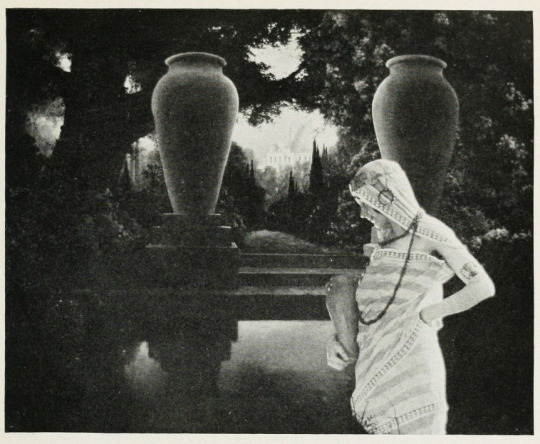
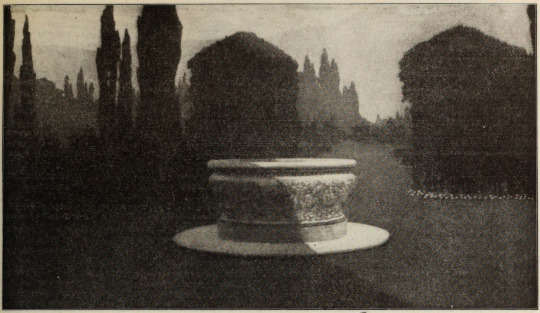

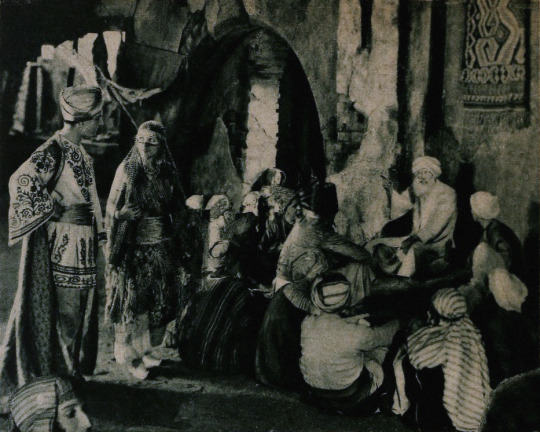


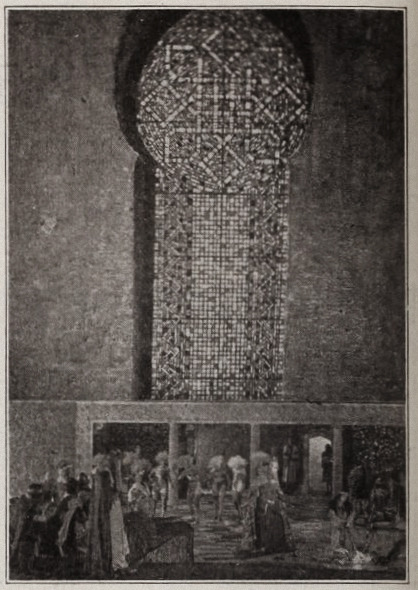
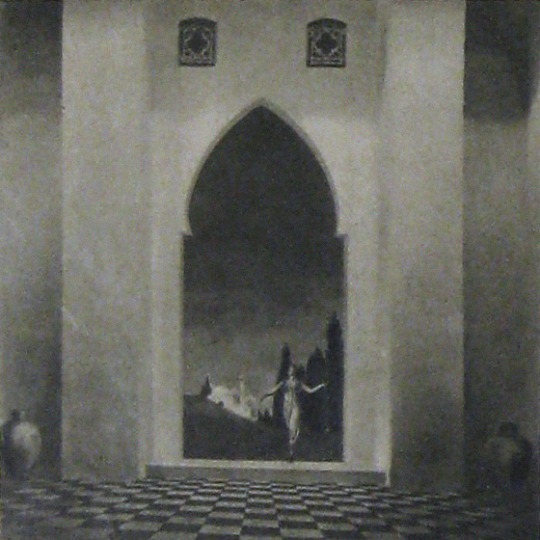
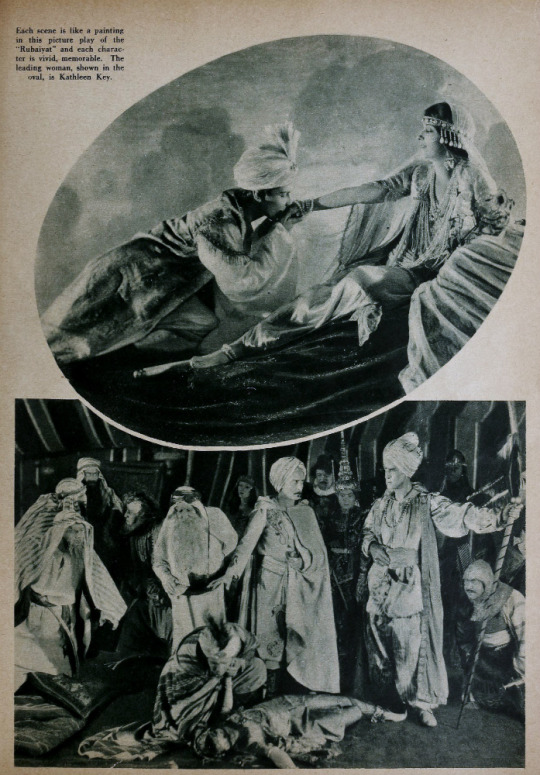
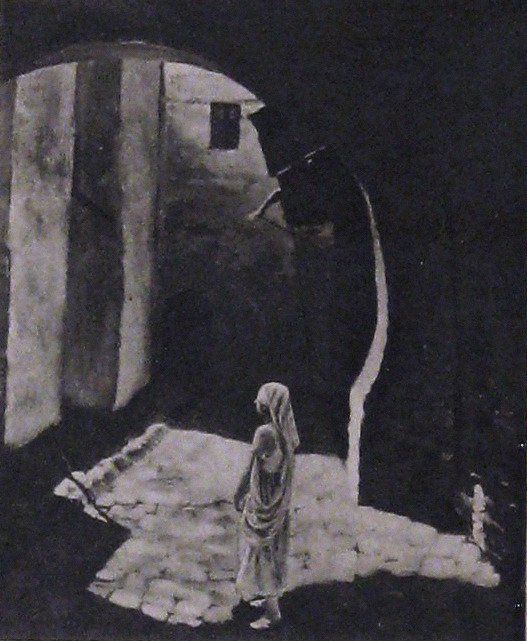

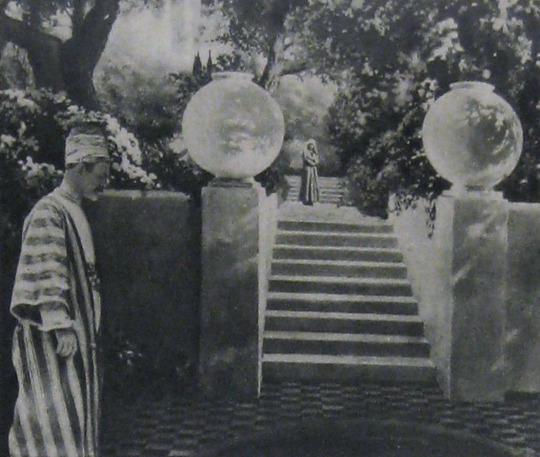
Alternate Titles: The Rubaiyat of Omar Khayyam, The Rubaiyat, Omar Khayyam, Omar
Direction: Ferdinand Pinney Earle; assisted by Walter Mayo
Scenario: Ferdinand P. Earle
Titles: Marion Ainslee, Ferdinand P. Earle (Omar), Louis Weadock (A Lover’s Oath)
Inspired by: The Rubaiyat of Omar Khayyam, as edited & translated by Edward FitzGerald
Production Manager: Winthrop Kelly
Camera: Georges Benoit
Still Photography: Edward S. Curtis
Special Photographic Effects: Ferdinand P. Earle, Gordon Bishop Pollock
Composer: Charles Wakefield Cadman
Editors: Arthur D. Ripley (The Rubaiyat of Omar Khayyam version), Ethel Davey & Ferdinand P. Earle (Omar / Omar Khayyam, the Director’s cut of 1922), Milton Sills (A Lover’s Oath)
Scenic Artists: Frank E. Berier, Xavier Muchado, Anthony Vecchio, Paul Detlefsen, Flora Smith, Jean Little Cyr, Robert Sterner, Ralph Willis
Character Designer: Louis Hels
Choreography: Ramon Novarro (credited as Ramon Samaniegos)
Technical Advisors: Prince Raphael Emmanuel, Reverend Allan Moore, Captain Dudley S. Corlette, & Captain Montlock or Mortlock
Studio: Ferdinand P. Earle Productions / The Rubaiyat, Inc. (Production) & Eastern Film Corporation (Distribution, Omar), Astor Distribution Corporation [States Rights market] (Distribution, A Lover’s Oath)
Performers: Frederick Warde, Edwin Stevens, Hedwiga Reicher, Mariska Aldrich, Paul Weigel, Robert Anderson, Arthur Carewe, Jesse Weldon, Snitz Edwards, Warren Rogers, Ramon Novarro (originally credited as Ramon Samaniegos), Big Jim Marcus, Kathleen Key, Charles A. Post, Phillippe de Lacy, Ferdinand Pinney Earle
Premiere(s): Omar cut: April 1922 The Ambassador Theatre, New York, NY (Preview Screening), 12 October 1923, Loew’s New York, New York, NY (Preview Screening), 2 February 1923, Hoyt’s Theatre, Sydney, Australia (Initial Release)
Status: Presumed lost, save for one 30 second fragment preserved by the Academy Film Archive, and a 2.5 minute fragment preserved by a private collector (Old Films & Stuff)
Length: Omar Khayyam: 8 reels , 76 minutes; A Lover’s Oath: 6 reels, 5,845 feet (though once listed with a runtime of 76 minutes, which doesn’t line up with the stated length of this cut)
Synopsis (synthesized from magazine summaries of the plot):
Omar Khayyam:
Set in 12th century Persia, the story begins with a preface in the youth of Omar Khayyam (Warde). Omar and his friends, Nizam (Weigel) and Hassan (Stevens), make a pact that whichever one of them becomes a success in life first will help out the others. In adulthood, Nizam has become a potentate and has given Omar a position so that he may continue his studies in mathematics and astronomy. Hassan, however, has grown into quite the villain. When he is expelled from the kingdom, he plots to kidnap Shireen (Key), the sheik’s daughter. Shireen is in love with Ali (Novarro). In the end it’s Hassan’s wife (Reicher) who slays the villain then kills herself.
A Lover’s Oath:
The daughter of a sheik, Shireen (Key), is in love with Ali (Novarro), the son of the ruler of a neighboring kingdom. Hassan covets Shireen and plots to kidnap her. Hassan is foiled by his wife. [The Sills’ edit places Ali and Shireen as protagonists, but there was little to no re-shooting done (absolutely none with Key or Novarro). So, most critics note how odd it is that all Ali does in the film is pitch woo, and does not save Shireen himself. This obviously wouldn’t have been an issue in the earlier cut, where Ali is a supporting character, often not even named in summaries and news items. Additional note: Post’s credit changes from “Vizier” to “Commander of the Faithful”]
Additional sequence(s) featured in the film (but I’m not sure where they fit in the continuity):
Celestial sequences featuring stars and planets moving through the cosmos
Angels spinning in a cyclone up to the heavens
A Potters’ shop sequence (relevant to a specific section of the poems)
Harem dance sequence choreographed by Novarro
Locations: palace gardens, street and marketplace scenes, ancient ruins
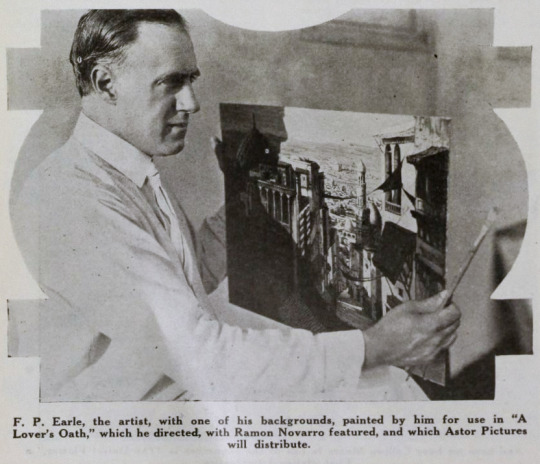
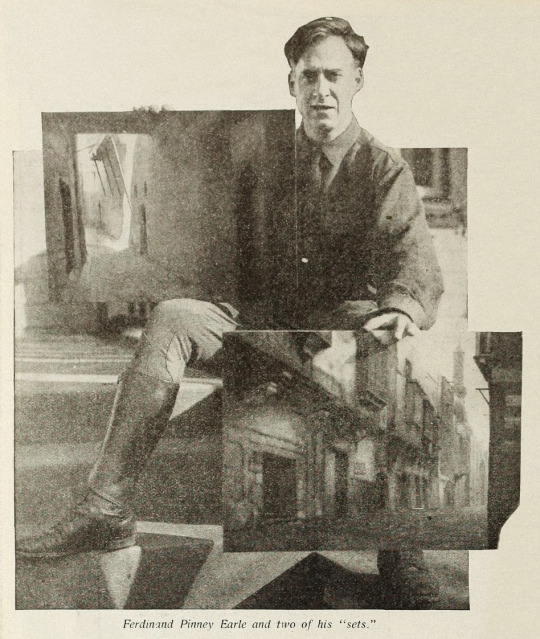
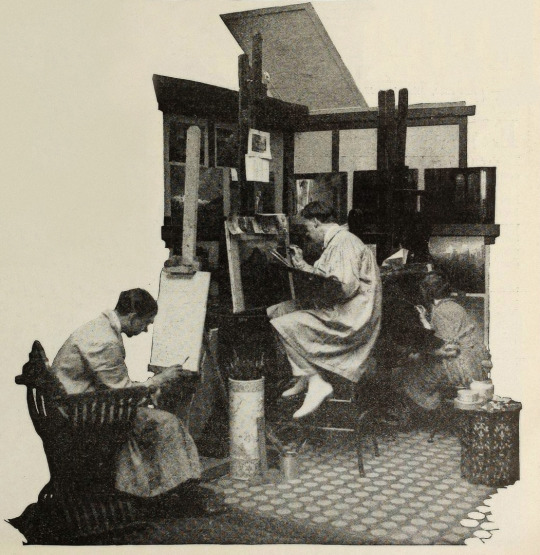


Points of Interest:
“The screen has been described as the last word in realism, but why confine it there? It can also be the last word in imaginative expression.”
Ferdinand P. Earle as quoted in Exhibitors Trade Review, 4 March 1922
The Rubaiyat of Omar Khayyam was a massive best seller. Ferdinand Pinney Earle was a classically trained artist who studied under William-Adolphe Bougueraeu and James McNeill Whistler in his youth. He also had years of experience creating art backgrounds, matte paintings, and art titles for films. Charles Wakefield Cadman was an accomplished composer of songs, operas, and operettas. Georges Benoit and Gordon Pollock were experienced photographic technicians. Edward S. Curtis was a widely renowned still photographer. Ramon Novarro was a name nobody knew yet—but they would soon enough.
When Earle chose The Rubaiyat as the source material for his directorial debut and collected such skilled collaborators, it seemed likely that the resulting film would be a landmark in the art of American cinema. Quite a few people who saw Earle’s Rubaiyat truly thought it would be:
William E. Wing writing for Camera, 9 September 1922, wrote:
“Mr. Earle…came from the world of brush and canvass, to spread his art upon the greater screen. He created a new Rubaiyat with such spiritual colors, that they swayed.” … “It has been my fortune to see some of the most wonderful sets that this Old Earth possesses, but I may truly say that none seized me more suddenly, or broke with greater, sudden inspiration upon the view and the brain, than some of Ferdinand Earle’s backgrounds, in his Rubaiyat. “His vision and inspired art seem to promise something bigger and better for the future screen.”
As quoted in an ad in Film Year Book, 1923:
“Ferdinand Earle has set a new standard of production to live up to.”
Rex Ingram
“Fifty years ahead of the time.”
Marshall Neilan
The film was also listed among Fritz Lang’s Siegfried, Chaplin’s Gold Rush, Fairbanks’ Don Q, Lon Chaney’s Phantom of the Opera and The Unholy Three, and Erich Von Stroheim’s Merry Widow by the National Board of Review as an exceptional film of 1925.
So why don’t we all know about this film? (Spoiler: it’s not just because it’s lost!)
The short answer is that multiple dubious legal challenges arose that prevented Omar’s general release in the US. The long answer follows BELOW THE JUMP!
Earle began the project in earnest in 1919. Committing The Rubaiyat to film was an ambitious undertaking for a first-time director and Earle was striking out at a time when the American film industry was developing an inferiority complex about the level of artistry in their creative output. Earle was one of a number of artists in the film colony who were going independent of the emergent studio system for greater protections of their creative freedoms.
In their adaptation of The Rubaiyat of Omar Khayyam, Earle and Co. hoped to develop new and perfect existing techniques for incorporating live-action performers with paintings and expand the idea of what could be accomplished with photographic effects in filmmaking. The Rubaiyat was an inspired choice. It’s not a narrative, but a collection of poetry. This gave Earle the opportunity to intersperse fantastical, poetic sequences throughout a story set in the lifetime of Omar Khayyam, the credited writer of the poems. In addition to the fantastic, Earle’s team would recreate 12th century Persia for the screen.
Earle was convinced that if his methods were perfected, it wouldn’t matter when or where a scene was set, it would not just be possible but practical to put on film. For The Rubaiyat, the majority of shooting was done against black velvet and various matte photography and multiple exposure techniques were employed to bring a setting 800+ years in the past and 1000s of miles removed to life before a camera in a cottage in Los Angeles.
Note: If you’d like to learn a bit more about how these effects were executed at the time, see the first installment of How’d They Do That.
Unfortunately, the few surviving minutes don’t feature much of this special photography, but what does survive looks exquisite:
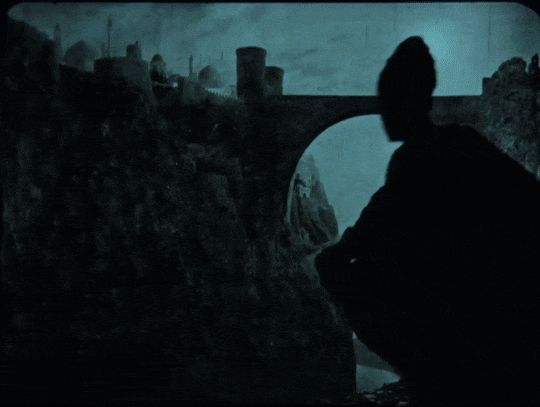
see all gifs here
Earle, knowing that traditional stills could not be taken while filming, brought in Edward S. Curtis. Curtis developed techniques in still photography to replicate the look of the photographic effects used for the film. So, even though the film hasn’t survived, we have some pretty great looking representations of some of the 1000s of missing feet of the film.

Nearly a year before Curtis joined the crew, Earle began collaboration with composer Charles Wakefield Cadman. In another bold creative move, Cadman and Earle worked closely before principal photography began so that the score could inform the construction and rhythm of the film and vice versa.
By the end of 1921 the film was complete. After roughly 9 months and the creation of over 500 paintings, The Rubaiyat was almost ready to meet its public. However, the investors in The Rubaiyat, Inc., the corporation formed by Earle to produce the film, objected to the ample reference to wine drinking (a comical objection if you’ve read the poems) and wanted the roles of the young lovers (played by as yet unknown Ramon Novarro and Kathleen Key) to be expanded. The dispute with Earle became so heated that the financiers absconded with the bulk of the film to New York. Earle filed suit against them in December to prevent them from screening their butchered and incomplete cut. Cadman supported Earle by withholding the use of his score for the film.
Later, Eastern Film Corp. brokered a settlement between the two parties, where Earle would get final cut of the film and Eastern would handle its release. Earle and Eastern agreed to change the title from The Rubaiyat of Omar Khayyam to simply Omar. Omar had its first official preview in New York City. It was tentatively announced that the film would have a wide release in the autumn.
However, before that autumn, director Norman Dawn launched a dubious patent-infringement suit against Earle and others. Dawn claimed that he owned the sole right to use multiple exposures, glass painting for single exposure, and other techniques that involved combining live action with paintings. All the cited techniques had been widespread in the film industry for a decade already and eventually and expectedly Dawn lost the suit. Despite Earle’s victory, the suit effectively put the kibosh on Omar’s release in the US.
Earle moved on to other projects that didn’t come to fruition, like a Theda Bara film and a frankly amazing sounding collaboration with Cadman to craft a silent-film opera of Faust. Omar did finally get a release, albeit only in Australia. Australian news outlets praised the film as highly as those few lucky attendees of the American preview screenings did. The narrative was described as not especially original, but that it was good enough in view of the film’s artistry and its imaginative “visual phenomena” and the precision of its technical achievement.
One reviewer for The Register, Adelaide, SA, wrote:
“It seems almost an impossibility to make a connected story out of the short verse of the Persian of old, yet the producer of this classic of the screen… has succeeded in providing an entertainment that would scarcely have been considered possible. From first to last the story grips with its very dramatic intensity.”
While Omar’s American release was still in limbo, “Ramon Samaniegos” made a huge impression in Rex Ingram’s Prisoner of Zenda (1922, extant) and Scaramouche (1923, extant) and took on a new name: Ramon Novarro. Excitement was mounting for Novarro’s next big role as the lead in the epic Ben-Hur (1925, extant) and the Omar project was re-vivified.
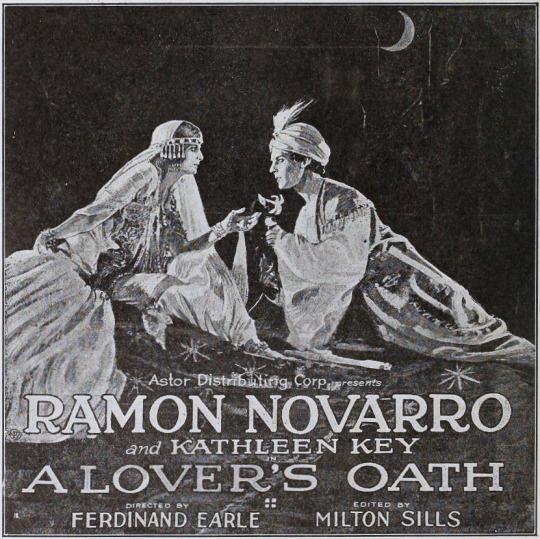
A new company, Astor Distribution Corp., was formed and purchased the distribution rights to Omar. Astor hired actor (note, not an editor) Milton Sills to re-cut the film to make Novarro and Key more prominent. The company also re-wrote the intertitles, reduced the films runtime by more than ten minutes, and renamed the film A Lover’s Oath. Earle had moved on by this point, vowing to never direct again. In fact, Earle was indirectly working with Novarro and Key again at the time, as an art director on Ben-Hur!
Despite Omar’s seemingly auspicious start in 1920, it was only released in the US on the states rights market as a cash-in on the success of one of its actors in a re-cut form five years later.
That said, A Lover’s Oath still received some good reviews from those who did manage to see it. Most of the negative criticism went to the story, intertitles, and Sills’ editing.
What kind of legacy could/should Omar have had? I’m obviously limited in my speculation by the fact that the film is lost, but there are a few key facts about the film’s production, release, and timing to consider.
The production budget was stated to be $174,735. That is equivalent to $3,246,994.83 in 2024 dollars. That is a lot of money, but since the production was years long and Omar was a period film set in a remote locale and features fantastical special effects sequences, it’s a modest budget. For contemporary perspective, Robin Hood (1922, extant) cost just under a million dollars to produce and Thief of Bagdad (1924, extant) cost over a million. For a film similarly steeped in spectacle to have nearly 1/10th of the budget is really very noteworthy. And, perhaps if the film had ever had a proper release in the US—in Earle’s intended form (that is to say, not the Sills cut)—Omar may have made as big of a splash as other epics.
It’s worth noting here however that there are a number of instances in contemporary trade and fan magazines where journalists off-handedly make this filmmaking experiment about undermining union workers. Essentially implying that that value of Earle’s method would be to continue production when unionized workers were striking. I’m sure that that would absolutely be a primary thought for studio heads, but it certainly wasn’t Earle’s motivation. Often when Earle talks about the method, he focuses on being able to film things that were previously impossible or impracticable to film. Driving down filming costs from Earle’s perspective was more about highlighting the artistry of his own specialty in lieu of other, more demanding and time-consuming approaches, like location shooting.
This divide between artists and studio decision makers is still at issue in the American film and television industry. Studio heads with billion dollar salaries constantly try to subvert unions of skilled professionals by pursuing (as yet) non-unionized labor. The technical developments of the past century have made Earle’s approach easier to implement. However, just because you don’t have to do quite as much math, or time an actor’s movements to a metronome, does not mean that filming a combination of painted/animated and live-action elements does not involve skilled labor.
VFX artists and animators are underappreciated and underpaid. In every new movie or TV show you watch there’s scads of VFX work done even in films/shows that have mundane, realistic settings. So, if you love a film or TV show, take the effort to appreciate the work of the humans who made it, even if their work was so good you didn’t notice it was done. And, if you’ve somehow read this far, and are so out of the loop about modern filmmaking, Disney’s “live-action” remakes are animated films, but they’ve just finagled ways to circumvent unions and low-key delegitimize the skilled labor of VFX artists and animators in the eyes of the viewing public. Don’t fall for it.
VFX workers in North America have a union under IATSE, but it’s still developing as a union and Marvel & Disney workers only voted to unionize in the autumn of 2023. The Animation Guild (TAG), also under the IATSE umbrella, has a longer history, but it’s been growing rapidly in the past year. A strike might be upcoming this year for TAG, so keep an eye out and remember to support striking workers and don’t cross picket lines, be they physical or digital!
Speaking of artistry over cost-cutting, I began this post with a mention that in the early 1920s, the American film industry was developing an inferiority complex in regard to its own artistry. This was in comparison to the European industries, Germany’s being the largest at the time. It’s frustrating to look back at this period and see acceptance of the opinion that American filmmakers weren’t bringing art to film. While yes, the emergent studio system was highly capitalistic and commercial, that does not mean the American industry was devoid of home-grown artists.
United Artists was formed in 1919 by Douglas Fairbanks, Charlie Chaplin, Mary Pickford, and D.W. Griffith precisely because studios were holding them back from investing in their art—within the same year that Earle began his Omar project. While salaries and unforgiving production schedules were also paramount concerns in the filmmakers going independent, a primary impetus was that production/distribution heads exhibited too much control over what the artists were trying to create.
Fairbanks was quickly expanding his repertoire in a more classical and fantastic direction. Cecil B. DeMille made his first in a long and very successful string of ancient epics. And the foreign-born children of the American film industry, Charlie Chaplin, Rex Ingram, and Nazimova, were poppin’ off! Chaplin was redefining comedic filmmaking. Ingram was redefining epics. Nazimova independently produced what is often regarded as America’s first art film, Salome (1923, extant), a film designed by Natacha Rambova, who was *gasp* American. Earle and his brother, William, had ambitious artistic visions of what could be done in the American industry and they also had to self-produce to get their work done.
Meanwhile, studio heads, instead of investing in the artists they already had contracts with, tried to poach talent from Europe with mixed success (in this period, see: Ernst Lubitsch, F.W. Murnau, Benjamin Christensen, Mauritz Stiller, Victor Sjöström, and so on). I’m in no way saying it was the wrong call to sign these artists, but all of these filmmakers, even if they found success in America, had stories of being hired to inject the style and artistry that they developed in Europe into American cinema, and then had their plans shot down or cut down to a shadow of their creative vision. Even Stiller, who tragically died before he had the opportunity to establish himself in the US, faced this on his first American film, The Temptress (1926, extant), on which he was replaced. Essentially, the studio heads’ actions were all hot air and spite for the filmmakers who’d gone independent.

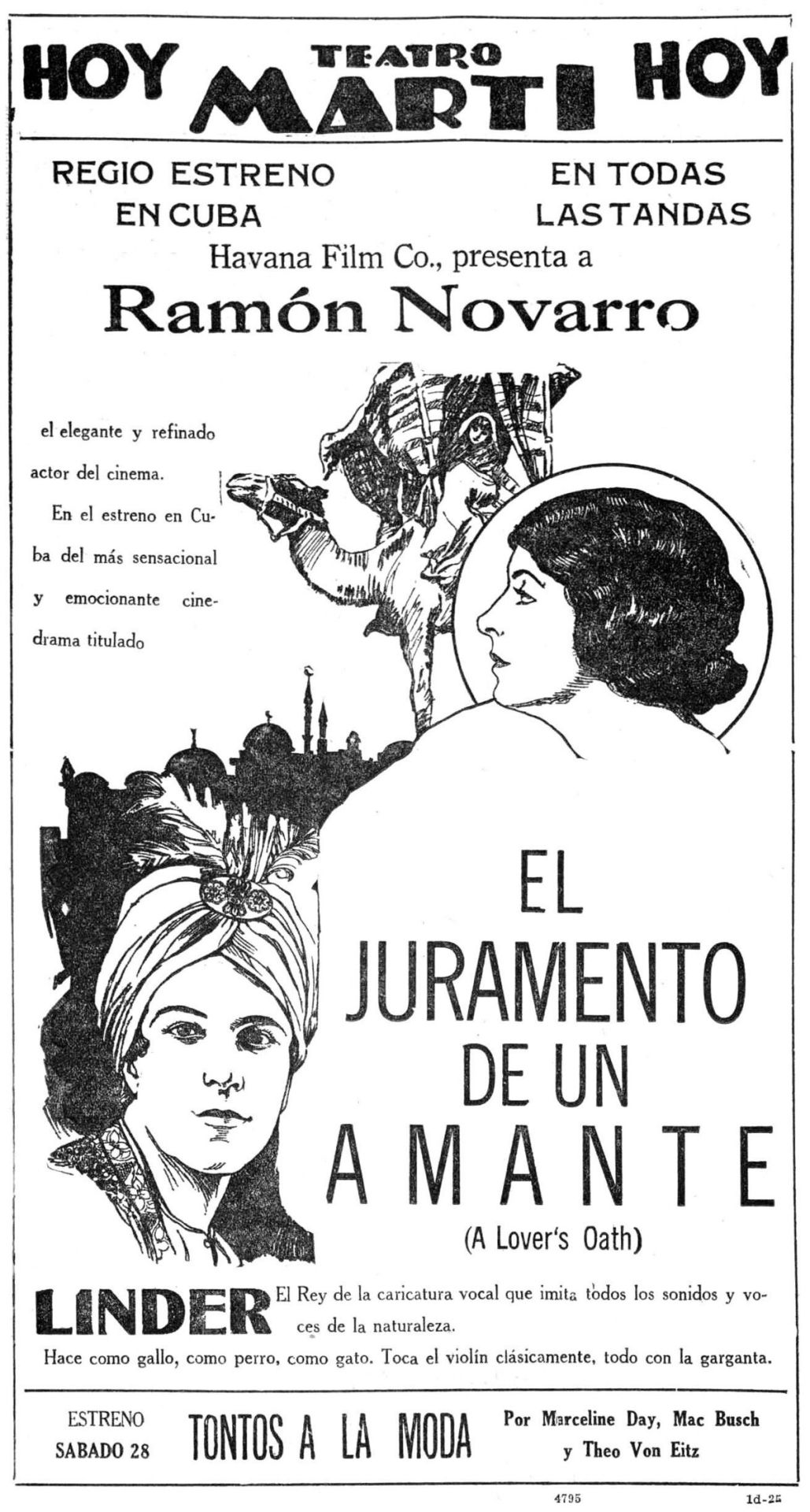
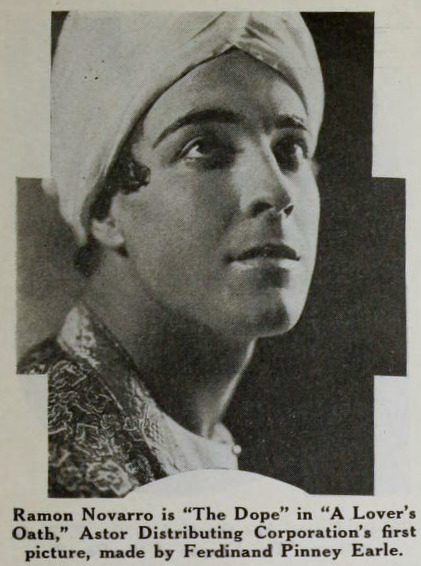
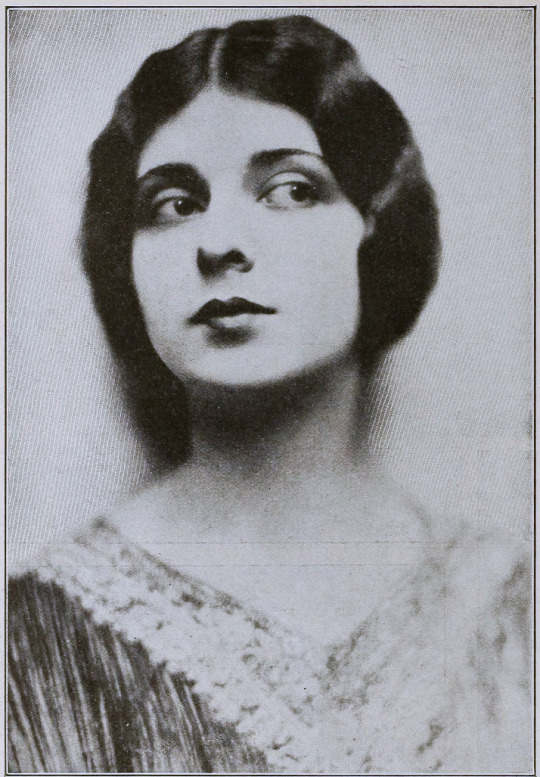
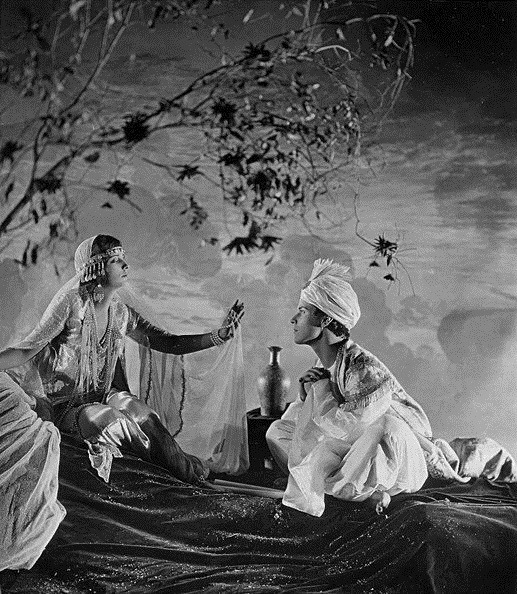
Finally I would like to highlight Ferdinand Earle’s statement to the industry, which he penned for from Camera in 14 January 1922, when his financial backers kidnapped his film to re-edit it on their terms:
MAGNA CHARTA
Until screen authors and producers obtain a charter specifying and guaranteeing their privileges and rights, the great slaughter of unprotected motion picture dramas will go merrily on.
Some of us who are half artists and half fighters and who are ready to expend ninety per cent of our energy in order to win the freedom to devote the remaining ten per cent to creative work on the screen, manage to bring to birth a piteous, half-starved art progeny.
The creative artist today labors without the stimulus of a public eager for his product, labors without the artistic momentum that fires the artist’s imagination and spurs his efforts as in any great art era.
Nowadays the taint of commercialism infects the seven arts, and the art pioneer meets with constant petty worries and handicaps.
Only once in a blue moon, in this matter-of-fact, dollar-wise age can the believer in better pictures hope to participate in a truely [sic] artistic treat.
In the seven years I have devoted to the screen, I have witnessed many splendid photodramas ruined by intruding upstarts and stubborn imbeciles. And I determined not to launch the production of my Opus No. 1 until I had adequately protected myself against all the usual evils of the way, especially as I was to make an entirely new type of picture.
In order that my film verison [sic] of the Rubaiyat of Omar Khayyam might be produced under ideal conditions and safeguarded from intolerable interferences and outside worries, I entered into a contract with the Rubaiyat, Inc., that made me not only president of the corporation and on the board of directors, but which set forth that I was to be author, production manager, director, cutter and film editor as well as art director, and that no charge could be made against the production without my written consent, and that my word was to be final on all matters of production. The late George Loane Tucker helped my attorney word the contract, which read like a splendid document.
Alas, I am now told that only by keeping title to a production until it is declared by yourself to be completed is it safe for a scenario writer, an actor or a director, who is supposedly making his own productions, to contract with a corporation; otherwise he is merely the servant of that corporation, subject at any moment to discharge, with the dubious redress of a suit for damages that can with difficulty be estimated and proven.
Can there be any hope of better pictures as long as contracts and copyrights are no protection against financial brigands and bullies?
We have scarcely emerged from barbarism, for contracts, solemnly drawn up between human beings, in which the purposes are set forth in the King’s plainest English, serve only as hurdles over which justice-mocking financiers and their nimble attorneys travel with impunity, riding rough shod over the author or artist who cannot support a legal army to defend his rights. The phrase is passed about that no contract is invioliable [sic]—and yet we think we have reached a state of civilization!
The suit begun by my attorneys in the federal courts to prevent the present hashed and incomplete version of my story from being released and exhibited, may be of interest to screen writers. For the whole struggle revolves not in the slightest degree around the sanctity of the contract, but centers around the federal copyright of my story which I never transferred in writing otherwise, and which is being brazenly ignored.
Imagine my production without pictorial titles: and imagine “The Rubaiyat” with a spoken title as follows, “That bird is getting to talk too much!”—beside some of the immortal quatrains of Fitzgerald!
One weapon, fortunately, remains for the militant art creator, when all is gone save his dignity and his sense of humor; and that is the rapier blade of ridicule, that can send lumbering to his retreat the most brutal and elephant-hided lord of finance.
How edifying—the tableau of the man of millions playing legal pranks upon men such as Charles Wakefield Cadman, Edward S. Curtis and myself and others who were associated in the bloody venture of picturizing the Rubaiyat! It has been gratifying to find the press of the whole country ready to champion the artist’s cause.
When the artist forges his plowshare into a sword, so to speak, he does not always put up a mean fight.
What publisher would dare to rewrite a sonnet of John Keats or alter one chord of a Chopin ballade?
Creative art of a high order will become possible on the screen only when the rights of established, independent screen producers, such as Rex Ingram and Maurice Tourneur, are no longer interferred with and their work no longer mutilated or changed or added to by vandal hands. And art dramas, conceived and executed by masters of screen craft, cannot be turned out like sausages made by factory hands. A flavor of individuality and distinction of style cannot be preserved in machine-made melodramas—a drama that is passed from hand to hand and concocted by patchworkers and tinkerers.
A thousand times no! For it will always be cousin to the sausage, and be like all other—sausages.
The scenes of a master’s drama may have a subtle pictorial continuity and a power of suggestion quite like a melody that is lost when just one note is changed. And the public is the only test of what is eternally true or false. What right have two or three people to deprive millions of art lovers of enjoying an artist’s creation as it emerged from his workshop?
“The Rubaiyat” was my first picture and produced in spite of continual and infernal interferences. It has taught me several sad lessons, which I have endeavored in the above paragraphs to pass on to some of my fellow sufferers. It is the hope that I am fighting, to a certain extent, their battle that has given me the courage to continue, and that has prompted me to write this article. May such hubbubs eventually teach or inforce a decent regard for the rights of authors and directors and tend to make the existence of screen artisans more secure and soothing to the nerves.
FERDINAND EARLE.
---
☕Appreciate my work? Buy me a coffee! ☕
Transcribed Sources & Annotations over on the WMM Blog!
See the Timeline for Ferdinand P. Earle's Rubaiyat Adaptation
#1920s#1923#1925#omar khayyam#ferdinand pinney earle#ramon novarro#independent film#american film#silent cinema#silent era#silent film#classic cinema#classic movies#classic film#film history#history#Charles Wakefield Cadman#cinematography#The Rubaiyat#cinema#film#lost film
51 notes
·
View notes
Text
🦘 Booklr Reads Australian - Authors on My Shelves 🐨
so, I’ve been trying to think of a way to recommend a lot of Australian authors really quickly for Booklr Reads Australian. what I came up with was just to give y’all a giant list of all the authors I have at home!
most of them are YA and/or fantasy authors, and I’ve marked my favourites with an asterisk (*) but if you have any questions, feel free to shoot me an ask 😊
1. Sarah Ayoub 2. Eugen Bacon 3. Shirley Barber * 4. AJ Betts 5. Danielle Binks * 6. Cally Black 7. Steph Bowe * 8. Alice Boyle 9. JC Burke 10. Meg Caddy * 11. Frances Chapman 12. Wai Chim * 13. Claire Christian 14. Lyndall Clipstone 15. Claire G Coleman 16. Katherine Collette 17. Harry Cook 18. Cath Crowley 19. Robyn Dennison 20. Cale Dietrich 21. Lauren Draper 22. CG Drews * 23. Michael Earp 24. Kate Emery 25. Sarah Epstein 26. Alison Evans * 27. Fleur Ferris 28. Carly Findlay 29. Helena Fox 30. Lisa Fuller 31. Emily Gale 32. Meg Gatland-Veness 33. Sophie Gonzales 34. Erin Gough * 35. Leanne Hall * 36. Pip Harry 37. Sonya Hartnett 38. Adam Hills 39. Simmone Howell 40. Megan Jacobson 41. Amie Kaufman 42. Melissa Keil 43. Nina Kenwood 44. Sharon Kernot 45. Kay Kerr * 46. Will Kostakis 47. Jay Kristoff 48. Ambelin Kwaymullina 49. Benjamin Law 50. Rebecca Lim 51. Gary Lonesborough * 52. Kathleen Loughnan 53. Miranda Luby 54. Tobias Madden 55. Melina Marchetta 56. Ellie Marney * 57. Freya Marske 58. Jodi McAlister * 59. Margot McGovern * 60. Nikki McWatters 61. Anna Morgan 62. Jaclyn Moriarty 63. Liane Moriarty 64. Garth Nix 65. Lynette Noni 66. Carly Nugent 67. Poppy Nwosu 68. Kate O’Donnell 69. Shivaun Plozza 70. Michael Pryor 71. Alice Pung 72. Emily Rodda * 73. Autumn Royal 74. Omar Sakr 75. Holden Sheppard 76. AG Slatter 77. Jo Spurrier 78. Krystal Sutherland * 79. Jared Thomas 80. Hayli Thompson 81. Gabrielle Tozer 82. Christos Tsiolkas 83. Alicia Tuckerman 84. Ellen van Neerven 85. Marlee Jane Ward 86. Vikki Wakefield 87. Lisa Walker 88. Jessica Watson * 89. Allayne L Webster 90. Anna Whateley * 91. Samantha Wheeler 92. Jen Wilde * 93. Rhiannon Wilde 94. Lili WIlkinson 95. Gabrielle Williams 96. Rhiannon Williams 97. Fiona Wood 98. Leanne Yong 99. Suzy Zail 100. Nevo Zisin 101. Markus Zusak
#booklr reads australian#booklr#bookblr#read australian#loveozya#trcc original#book recs#book recommendations
21 notes
·
View notes
Note
Hi, hope you are doing well! I don’t know if you received my first ask but i was wondering if you could help me find a sister for kathleen robertson between 30-40 that can work in the Tin Man tv series. Thanks
Charity Wakefield (1980) - The Great.
Ruth Wilson (1982) - His Dark Materials.
Eleanor Matsuura (1983) Japanese / White - Into the Badlands.
Janet Montgomery (1985)
Cynthia Addai-Robinson (1985) Ghanaian / White - Rings of Power.
Alessandra Mastronardi (1986) - Medici.
Peri Baumeister (1986)
Natasha O'Keeffe (1986) - The Wheel of Time.
Caroline Ford (1988) Afro Trinidadian, Chinese, Scottish / White - Carnival Row.
Some of these are at a push since it was hard to find people with similar styled fantasy resources but they could totally work!
2 notes
·
View notes
Text

🕺🏻 Love Never Felt So Good - Une Histoire entre Archives, Héritage et Réinvention
"Love Never Felt So Good" est une chanson à l'histoire aussi fascinante que son rythme est entraînant. Co-écrite en 1983 par Michael Jackson et Paul Anka, cette pépite dormait depuis des décennies avant de retrouver la lumière posthume en 2014.
🎹 Les origines : une session oubliée
La chanson est née lors d'une session d'enregistrement entre Michael Jackson et Paul Anka en 1983. Accompagné au piano par Anka, Jackson pose une voix souple sur une mélodie douce, dans une démo qui restera longtemps inédite.

Très peu de temps après, Paul Anka propose la chanson à Johnny Mathis, qui accepte de l'enregistrer. Cette version est publiée en 1984 dans son album A Special Part of Me, avec des paroles partiellement modifiées par Kathleen Wakefield.


youtube
🪩 La démo refait surface
En 2006, une version de basse qualité de la démo de Jackson circule sur internet, attisant la curiosité des fans. En 2010, une version audio améliorée commence à circuler, confirmant l'authenticité de l'enregistrement original.
youtube
🔊 Une renaissance posthume
En 2014, la chanson est officiellement publiée dans l'album posthume Xscape dans trois versions :
Une version solo de Michael Jackson, modernisée par les producteurs.
Une version duo avec Justin Timberlake, produite par Timbaland.
Et la démo originale, disponible sur l'édition deluxe.

La chanson est présentée pour la première fois au grand public le 1er mai 2014 lors des iHeartRadio Music Awards, accompagnée d'un visuel hommage à MJ. Elle sort officiellement en single le 2 mai 2014 aux Etats-Unis, puis le 12 mai 2014 en France.

📈 Un succès mondial
"Love Never Felt So Good" rencontre un succès international. Elle atteint le Top 10 dans 18 pays, dont la 2e place en France, la 1re en Irlande et en Israël, et la 9e au Billboard Hot 100 aux Etats-Unis
Grâce à cette performance, Michael Jackson devient le premier artiste à avoir placé au moins un single dans le Top 10 du Billboard Hot 100 sur cinq décennies, ou même six si on compte les Jackson 5.
📰Un accueil critique positif
La chanson reçoit un accueil chaleureux de la critique. Aisha Harris du magazine Slate écrit que la version avec Timberlake "sonne comme un morceau extrait de l'album Off The Wall" et ajoute :
"Si les producteurs doivent sortir plus de musique de MJ, espérons qu'elle continuera à sonner aussi bien."
John O'Brien de Yahoo salue lui aussi le morceau :
"L'âme disco chic de ce single aurait pu facilement être levée de Off the Wall ou Thriller."
🤝Une collaboration qui perdure
"Love Never Felt So Good" est la deuxième collaboration entre Michael Jackson et Paul Anka à voir officiellement le jour après la mort de l'artiste. La première étant This Is It (2009).
youtube
En 2018, une troisième chanson issue de la même session de 1983 est utilisée : Don't Matter to Me de Drake, où la voix de Michael Jackson est à nouveau extraite d'un enregistrement réalisé avec Paul Anka.
youtube
💿 En résumé...
"Love Never Felt So Good" n'est pas juste un single posthume de plus. C'est la preuve qu'un classique peut traverser les décennies, rester pertinent, et même renaître sous une nouvelle forme sans trahir son essence. Grâce à la vision d'Anka, le talent éternel de MJ, et la modernité des producteurs, cette chanson incarne un pont entre passé et présent.
#love never felt so good#michael jackson#mj xscape#xscape album#michael jackson forever#mj legacy#mj history#mj demo#off the wall era#80s music#disco funk#vintage vibes#retro groove#studio vibes#mj fam#moonwalker#king of pop#rare mj#mj collectors#graphic design#music history#tumblr edit#visual story telling#archive design#photoshop art#une chanson une histoire#musique éternelle#la voix de mj#souvenir sonore#Youtube
0 notes
Text
I am going to lie down in the field, grass a green halo over my head. I’ll let the sun singe the peach, my flesh, luxurious, ruined. Let rain have its way with me so I can feel my mother’s washcloth on my face, hand I turned from. Lord, soften the hard pit of my heart. Excuse me, grass, for keeping you in the dark while I lie here considering what I will, and will not say.
Kathleen A. Wakefield - 'To Begin With,' Image Journal: Art, Faith, Mystery (no. 87)
1 note
·
View note
Text








9th Car Distributed In Two Months.. OHITWORKS.net
Documentation beats conversation Drive Your Dream Car for $33 a month*
(terms & conditions apply)
No Credit Check
No Deposit
No Financing
No Insurance Payments
No Maintenance Cost
No Tax/Tag Payments
All you do is put gas in it & DRIVE!
Ask me how comment below---> OhitWorks.net <---
Let's Welcome Our New Members !!
To “MY CAR CLUB”
Where you can drive your dream car for just $33 a month. “Membership has its privileges” 🚙💵🏆
Arsenia Espinal,
Ashley Marshall,
Abbie Abang,
Elizabeth Esther,
Keisha Sanchez,
Carlos Wiley,
Seth Michael,
James JR Hicks,
James JaiDiddy Bowens,
Ahesha Catalano,
Dwayne Tyga Ruffin,
Jermaine Johnson,
Altaneshya Re'jh Gordon,
Darius Hester,
Lenora Rich,
Janice Darby-Coleman,
Revan S T Naik,
Anthony Gomes,
Jacqueline Marquez,
Shauntel Beauvais,
Heather Hodges,
Karla Wiley,
Edit Erdősi,
Paras Bajaj,
Nikole Carpenter,
Katara Clark,
Michaeline Johnson,
Celesta Williams,
Phidelmah Lovelleen Phiri,
Beck Neil,
Don Millions,
David Castro,
John Jt Thomas,
Carlos Collier,
Joella Phillip,
Shwand Washington,
Trey Johnson,
Princess Mayte,
Rakeeb Jannathee,
Constance Hughes,
Shaunna Allen,
Stacy Grant,
Gwendolyn Webster,
Brittany MsPriss Williams,
Kevin E. Young,
Jeannette McAdory,
Tasha Holliday,
P'Angela Jones,
Kahadeja Streater,
Carol Chandler,
Tahdra Harrison,
Jerald J. Evans,
Daqqualla Conwright,
James Highstakes Gray Jr.,
T-raw Davis,
Jacoby Rice,
Quincy Wells,
Laura Kathleen Saul,
Chino Lucci,
Lynnette Beamon,
Theo Strong,
Turtle Hickman,
Dicaprio ThecreditPrince Leaderhouse,
Corey Clemons,
Djnothin Nice,
Dedee Marquez,
Ashleigh Bryant,
Heather Hodges,
Dwayne M. Golden,
Allegra Collins,
Chris Ant,
Michelle Gilford,
EastTexas Starsfootball,
Carl OhitWorks Greene,
Mandee N Adam,
Kendrick Wakefield,
Bryan Riser,
Latanya Gerald Ruffin,
Maricruz Saucedo,
James Davis Jr.,
Daniel Borrego,
RoadRunna Freeway,
Kas Pat,
Jey Praise,
Alexandria Bamborough,
Tabitha Vance,
Loyetta Corbyn,
Key Note,
Saladine EL,
Germaine Monroe,
Queenie Annette,
Laura Weathersby,
Ashley Jackson,
Nora Jones,
Demetra Glaze-Harris
0 notes
Note
Leaf: I would like to learn more about the fae, could you tell me where a good place to start would be? maybe book recommendations? or specific fairy tales to look into? thank you so much
Ah, welcome. It is always good to see those who wish to broaden their knowledge of the old stories.As to the Fae, it depends on what you’re looking for. You see, the Folk did not arise from a singular instance of Mythology, but from an amalgamation of many cultural traditions and stories. For Ireland we have the Tuatha de Danann and their battles against the Fir Bolg and eventually become the Aos Sidhe. There are the Welsh Tylwyth Teg who steal fair haired children from their beds and leave changelings in their place.The Scottish hold great pride in their Seelie and Unseelie courts, while the Scandinavian people whisper fearfully of Trolls, Gnomes, Shapeshifters, Wights, and Werewolves.Will you look to the Norse for stories of Light Elfs, Dwarfs, and Disir? Or to the Germanic Wichtlein who aided miners, and are one of the distant precursors to both the Goblins and Dwarfs we imagine today?Or would you prefer to move forward to the Victorian age where Fae were brought together to diminutive sprites and fanciful little magics that you might find in Peter Pan, A Midsummer Night’s Dream, or the Faerie Queene?It really depends on what you’re trying to find. The Lore of the Fae is vast and encompasses the traditions of many different European cultures, each unique and important in its own way. I can include below a full list of all the sources I happen to possess at this time. Hopefully they will grant your desire of providing an excellent place with which to begin your research.
Kirk, Robert. The Secret Commonwealth of Elves, Fauns, and Fairies. 1691. Reprint, London: D. Nutt, 1893.
Wilby, Emma. “The Witch's Familiar and the Fairy in Early Modern England and Scotland.” Folklore, vol. 111, no. 2, 2000, pp. 283–305. JSTOR, JSTOR, www.jstor.org/stable/1260607.
Vejvoda, Kathleen. “‘Too Much Knowledge of the Other World’: Women and Nineteenth-Century Irish Folktales.” Victorian Literature and Culture, vol. 32, no. 1, 2004, pp. 41–61. JSTOR, JSTOR, www.jstor.org/stable/25058651.
Nutt, Alfred. “Presidential Address. Britain and Folklore.” Folklore, vol. 10, no. 1, 1899, pp. 71–86. JSTOR, JSTOR, www.jstor.org/stable/1253611.
Goodare, Julian. “The Cult of the Seely Wights in Scotland.” Folklore, vol. 123, no. 2, 2012, pp. 198–219., www.jstor.org/stable/41721541.
Briggs, Katharine Mary (1976). "Euphemistic names for fairies". An Encyclopedia of Fairies. New York: Pantheon Books. p. 127. ISBN 0-394-73467-X.
Rossetti, Christina G, and Martin Ware. Goblin Market. London: V. Gollancz, 1980. Print.
Braddon, M. E. (Mary Elizabeth), 1835-1915. Lady Audley's Secret. New York :Federal Book Company, 18ADAD. Print.
Frazer J.G. (1983) Sympathetic Magic. In: The Golden Bough. Palgrave Macmillan, London.
Yeats, William Butler. “The Stolen Child.” Collected Classic Poems, Stevenson to Yeats, Jan. 2012, pp. 1–2. EBSCOhost, ezproxy.uvu.edu/login?url=http://search.ebscohost.com/login.aspx?direct=true&db=prf&AN=76614684&site=eds-live.
Spenser, Edmund, Thomas P. Roche, and C P. O'Donnell. The Faerie Queene. Harmondsworth: Penguin, 1978. Print.
Gregory, Lady, and Finn MacCumhaill. Gods and Fighting Men: The Story of Tuatha de Danann and of the Fianna of Ireland. John Murray, 1905.
Howard, Marvin ElRoy. "" See ya na yon narrow road?": the search for Elfland in folklore of the Scottish border." (1996).
Campbell, John Gregorson. Superstitions of the Highlands & Islands of Scotland. J. MacLehose and sons, 1900.
Diane Purkiss, At The Bottom Of The Garden: A Dark History of Fairies, Hobgoblins, and Other Troublesome Things (2000)
Kready, Laura (1916). A Study of Fairy Tales. Boston: Houghton Mifflin Company.
“Trees in Mythology”. Mythencyclopedia.com. 2007-02-19. Retrieved 2014-05-11.
“‘The king o fairy with his rout’: Fairy Magic in the Literature of Late Medieval Britain–By Hannah Priest”. September 8, 2011.
Lenihan, Eddie and Green, Carolyn Eve (2004) Meeting The Other Crowd: The Fairy Stories of Hidden Ireland. pp. 146–7 ISBN 1-58542-206-1.
https://tam-lin.org/stories/Thomas_the_Rhymer.html
Evans Wentz, W. Y. (1966, 1990) The Fairy-Faith in Celtic Countries. Gerrards Cross, Colin Smythe Humanities Press ISBN 0-901072-51-6
De Jubainville, M. H. D'Arbois and Richard Irvine Best (1903). The Irish Mythological Cycle and Celtic Mythology. Dublin Hodges, Figgis, and Company.
Keightley, Thomas. (1892) Fairy Mythology. London: George Bell & Sons, Retrieved from Project Gutenberg 15 October 2017
King James. Daemonologie. A Critical Edition. In Modern English. 2016. ISBN 1-5329-6891-4.
Williams, Noel. “The semantics of the word fairy: making meaning out of thin air.” The Good People: new fairylore essays (1991): 457-78.
https://britishfairies.wordpress.com/
Wakefield, Sarah R. Folklore in British Literature: Naming and Narrating in Women’s Fiction, 1750-1880. Vol. 80. Peter Lang, 2006.
Laviolette, Patrick, and Alastair McIntosh. “Fairy hills: merging heritage and conservation.” Ecos 18.¾ (1997): 2-8.
Owen, Alex. “'Borderland Forms’: Arthur Conan Doyle, Albion’s Daughters, and the Politics of the Cottingley Fairies.” History Workshop, no. 38, 1994, pp. 48–85.
Zipes, Jack. Victorian Fairy Tales: The Revolt of the Fairies and Elves. Routledge, 2016.
Silver, Carole. “On the Origin of Fairies: Victorians, Romantics, and Folk Belief.” Victorian Literature and Culture 14 (1986): 141-156.
Harms, Daniel M. “Hell and Fairy: The Differentiation of Fairies and Demons Within British Ritual Magic of the Early Modern Period.” Knowing Demons, Knowing Spirits in the Early Modern Period. Palgrave Macmillan, Cham, 2018. 55-77.
Sikes, Wirt. British goblins: Welsh folk-lore, fairy mythology, legends and traditions. S. Low, Marston, Searle & Rivington, 1880.
Loponen, Mika. “Faerie Folklore in Medieval Tales-An Introduction.” (2006).
Lindow, John. Norse mythology: a guide to gods, heroes, rituals, and beliefs. Oxford University Press, 2002.
Gimbel, Jared Joseph. “Spiritual Descent: A Study of Semi-Divine Beings and Non-Human Species in European Mythologies.” (2011).
https://www.gutenberg.org/files/41006/41006-h/41006-h.htm
John Bauers Bästa: Ett Urval Sagor Ur "bland Tomtar Och Troll" Åren 1907-1915. Stockholm: Åhlén & Åkerlund, 1951. Print.
32 notes
·
View notes
Video
vimeo
Client: Nike Agency: Wieden + Kennedy Executive Creative Directors: Jason Bagley, Eric Baldwin Creative Directors: Alberto Ponte, Ryan O’Rourke Copywriter: Dylan Lee Art Director: Naoki Ga Director of Production: Matt Hunnicutt Executive Producers: Jake Grand, Krystle Mortimore Senior Producers: Katie McCain, Byron T. Oshiro Associate Producers: Samson Selam, Shani Storey Global Brand Director: André Gustavo Brand Director: Kate Rutkowski Brand Manager: Paanii Annan Creative Operations Managers: Saba Spencer, David Ramirez Global Group Strategy Director: Andy Lindblade, Paula Bloodworth Media Team: Danny Sheniak, Reme Debisschop, Emily Dalton, Vivian Zhang, Graham Wallace, Claudia Iraheta Brand Strategy Directors: Nathan Goldberg, AJ Blumenthal Business Affairs: Karen Crossley, Edith Ortiz, Emily Kahn Broadcast Traffic: Sabrina Reddy, Billy Mucha Design Ops Manager/Design Producer: Alicia Kuna, Michael Rosenau, Michael Frediani Studio Designers: Joan Comellas, Jamon Sin, Mitch Wilson ____________________________________________________________________________ LIVE ACTION Production Company: Pulse Films Director: Oscar Hudson Director of Photography: Logan Triplett Live Action Producer: Dennis Beier Executive Producers: Darren Foldes Key Costumer: Chris Araujo Production Designer: Adam Wilson Managing Director: Hillary Rogers President - Commercial & Branded: Davud Karbassioun ____________________________________________________________________________ Post Production Design Design Studio: Elastic Art Director: Jeff Han Producers: Paul Makowski, Adam Goins Animators: Nader Husseini, Julia Wright, Chad Danieley, Aziz Dosmetov, Trix Taylor, Lucy Kim, Alex Silver Deputy Head of Production: Zach Wakefield Executive Producer: Luke Colson Head of Production: Kate Berry Managing Director: Jennifer Sofio Hall ------- VFX VFX Studio: a52 VFX Supervisor: Patrick Murphy CG Supervisor: Andy Wilkoff Lead Flame Artist: Patrick Murphy Flame Artists: Steve Wolff, Urs Furrer, Matt Sousa, Stefan Gaillot, Andy Rafael Barrios, Hugh Seville, Richard Hirst, Adam Flynn, Dan Ellis, Kevin Stokes, Chris Riley, Rod Basham, Michael Vaglienty, Enid Dalkoff, Susanne Scharping 3D Artists: Dustin Mellum Tracking: Joe Chiechi, Mike Bettinardi, Michael Cardenas Online Editors: Kevin Stokes, Chris Riley, Sam Kolber Producers: Andrew Rosenberger, Everett Cross, Jillian Lynes Executive Producers: Patrick Nugent & Kim Christensen Managing Director: Jennifer Sofio Hall ____________________________________________________________________________ COLOR Color Studio: a52 Color Colorist: Daniel De Vue Color Producer: Jenny Bright Executive Producer: Thatcher Peterson _________________________________________________________________________ EDITORIAL Editorial Company: JOINT Editor: Peter Wiedensmith, Jessica Baclesse Assistant Editor: Jasmine McCullough, JC Nuñez Footage Researcher: Izzie Raitt Producer: Kathleen Russell Production Coordinator: Aubree VanDercar Executive Producer: Leslie Carthy ____________________________________________________________________________ SOUND DESIGN Sound Design Company: JOINT Sound Designer: Noah Woodburn Audio Assistant: Natalie Huizenga Executive Producer: Leslie Carthy MIX Mix Compay: JOINT Audio Mixer: Noah Woodburn Audio Assistant: Natalie Huizenga Executive Producer: Leslie Carthy
1 note
·
View note
Text
♫ One Hundred Ways ♫
♫ One Hundred Ways ♫
I’m a Quincy Jones fan … I like most of his music. I found no trivia on this song, released in 1981, with James Ingram on vocals. So, just listen and be thankful that I’m not rambling on … and on … and on. 😊
One Hundred Ways Quincy Jones
Compliment what she does Send her roses just because If it’s violins she loves Let them play
View On WordPress
0 notes
Text
What I’m Reading
BOOKS OF JANUARY Uprooted by Naomi Novik* ** Spinning Silver by Naomi Novik ** Charlie and the Chocolate Factory by Roald Dahl Winter by Ali Smith Dear Friend, From My Life I Write to You in Your Life by Yiyun Li (NF) The Archived by Victoria Schwab ** The Unbound by Victoria Schwab Sour Heart by Jenny Zhang (SS) The Stranger in the Woods: The Extraordinary Story of the Last True Hermit by Michael Finkel (NF) ** The Overhaul by Kathleen Jamie (P) Wildcard by Marie Lu The Cheerleaders by Kara Thomas Universal Harvester by John Darnielle Misfit by Jon Skovron Spoonbenders by Daryl Gregory ** Miss Pettigrew Lives for a Day by Winifred Watson Who’s Afraid of Virginia Woolf?: A Play by Edward Albee Blackfish City by Sam. J Miller **
Graphic Novels read: Sabrina by Nick Drnaso Durarara!! (Vol.1-4), Saika Arc (Vol.1-3), Yellow Scarf Arc (Vol.1-3) — Narita/Yasuda/Satorigi **
(19 books read / 100 books goal)
currently reading: Kurt Vonnegut: Letters edited by Dan Wakefield (NF) Useless Magic: Lyrics and Poetry by Florence Welch (P) Dead Girls: Essays on Surviving an American Obsession by Alice Bolin (NF) Sorry to Disrupt the Peace by Patty Yumi Cottrell Havemercy by Jaida Jones & Danielle Bennet
* - re-read // ** - 4+ star-rating on my goodreads (recommended) GN - graphic novel // NF - non-fiction SS - short story collection // P - poetry AB - audiobook
TBR: Let’s Talk About Love by Claire Kann Emergency Contact by Mary H.K. Choi Space Opera by Catherynne M. Valente Party Girls Die in Pearls by Plum Sykes A Guide to Being Born by Ramona Ausubel (SS) First, We Make the Beast Beautiful: A New Journey Through Anxiety by Sarah Wilson (NF)
WHAT ARE YOU READING? :D
#books#booksworm#reading#TBR#what are you reading#my books#2019#january#february#reading year 2019#books of 2019#novels#graphic novels#manga#fiction#non fiction#poetry#YA#contemporary romance#fantasy#sci fi#essays#short stories
2 notes
·
View notes
Video
vimeo
Nike “You Can’t Stop Us” from a52 on Vimeo.
Client: Nike Agency: Wieden + Kennedy
Executive Creative Directors: Jason Bagley, Eric Baldwin Creative Directors: Alberto Ponte, Ryan O’Rourke Copywriter: Dylan Lee Art Director: Naoki Ga Director of Production: Matt Hunnicutt Executive Producers: Jake Grand, Krystle Mortimore Senior Producers: Katie McCain, Byron T. Oshiro Associate Producers: Samson Selam, Shani Storey Global Brand Director: André Gustavo Brand Director: Kate Rutkowski Brand Manager: Paanii Annan Creative Operations Managers: Saba Spencer, David Ramirez Global Group Strategy Director: Andy Lindblade, Paula Bloodworth Media Team: Danny Sheniak, Reme Debisschop, Emily Dalton, Vivian Zhang, Graham Wallace, Claudia Iraheta Brand Strategy Directors: Nathan Goldberg, AJ Blumenthal Business Affairs: Karen Crossley, Edith Ortiz, Emily Kahn Broadcast Traffic: Sabrina Reddy, Billy Mucha Design Ops Manager/Design Producer: Alicia Kuna, Michael Rosenau, Michael Frediani Studio Designers: Joan Comellas, Jamon Sin, Mitch Wilson ____________________________________________________________________________
LIVE ACTION Production Company: Pulse Films Director: Oscar Hudson Director of Photography: Logan Triplett Live Action Producer: Dennis Beier Executive Producers: Darren Foldes Key Costumer: Chris Araujo Production Designer: Adam Wilson Managing Director: Hillary Rogers President - Commercial & Branded: Davud Karbassioun ____________________________________________________________________________ Post Production
Design Design Studio: Elastic Art Director: Jeff Han Producers: Paul Makowski, Adam Goins Animators: Nader Husseini, Julia Wright, Chad Danieley, Aziz Dosmetov, Trix Taylor, Lucy Kim, Alex Silver Deputy Head of Production: Zach Wakefield Executive Producer: Luke Colson Head of Production: Kate Berry Managing Director: Jennifer Sofio Hall ------- VFX VFX Studio: a52 VFX Supervisor: Patrick Murphy CG Supervisor: Andy Wilkoff Lead Flame Artist: Patrick Murphy Flame Artists: Steve Wolff, Urs Furrer, Matt Sousa, Stefan Gaillot, Andy Rafael Barrios, Hugh Seville, Richard Hirst, Adam Flynn, Dan Ellis, Kevin Stokes, Chris Riley, Rod Basham, Michael Vaglienty, Enid Dalkoff, Susanne Scharping 3D Artists: Dustin Mellum Tracking: Joe Chiechi, Mike Bettinardi, Michael Cardenas Online Editors: Kevin Stokes, Chris Riley, Sam Kolber Producers: Andrew Rosenberger, Everett Cross, Jillian Lynes Executive Producers: Patrick Nugent & Kim Christensen Managing Director: Jennifer Sofio Hall ____________________________________________________________________________ COLOR Color Studio: a52 Color Colorist: Daniel De Vue Color Producer: Jenny Bright Executive Producer: Thatcher Peterson _________________________________________________________________________ EDITORIAL Editorial Company: JOINT Editor: Peter Wiedensmith, Jessica Baclesse Assistant Editor: Jasmine McCullough, JC Nuñez Footage Researcher: Izzie Raitt Producer: Kathleen Russell Production Coordinator: Aubree VanDercar Executive Producer: Leslie Carthy ____________________________________________________________________________ SOUND DESIGN Sound Design Company: JOINT Sound Designer: Noah Woodburn Audio Assistant: Natalie Huizenga Executive Producer: Leslie Carthy
MIX Mix Compay: JOINT Audio Mixer: Noah Woodburn Audio Assistant: Natalie Huizenga Executive Producer: Leslie Carthy
0 notes
Video
vimeo
Nike “You Can’t Stop Us” from a52 on Vimeo.
Client: Nike Agency: Wieden + Kennedy
Executive Creative Directors: Jason Bagley, Eric Baldwin Creative Directors: Alberto Ponte, Ryan O’Rourke Copywriter: Dylan Lee Art Director: Naoki Ga Director of Production: Matt Hunnicutt Executive Producers: Jake Grand, Krystle Mortimore Senior Producers: Katie McCain, Byron T. Oshiro Associate Producers: Samson Selam, Shani Storey Global Brand Director: André Gustavo Brand Director: Kate Rutkowski Brand Manager: Paanii Annan Creative Operations Managers: Saba Spencer, David Ramirez Global Group Strategy Director: Andy Lindblade, Paula Bloodworth Media Team: Danny Sheniak, Reme Debisschop, Emily Dalton, Vivian Zhang, Graham Wallace, Claudia Iraheta Brand Strategy Directors: Nathan Goldberg, AJ Blumenthal Business Affairs: Karen Crossley, Edith Ortiz, Emily Kahn Broadcast Traffic: Sabrina Reddy, Billy Mucha Design Ops Manager/Design Producer: Alicia Kuna, Michael Rosenau, Michael Frediani Studio Designers: Joan Comellas, Jamon Sin, Mitch Wilson ____________________________________________________________________________
LIVE ACTION Production Company: Pulse Films Director: Oscar Hudson Director of Photography: Logan Triplett Live Action Producer: Dennis Beier Executive Producers: Darren Foldes Key Costumer: Chris Araujo Production Designer: Adam Wilson Managing Director: Hillary Rogers President - Commercial & Branded: Davud Karbassioun ____________________________________________________________________________ Post Production
Design Design Studio: Elastic Art Director: Jeff Han Producers: Paul Makowski, Adam Goins Animators: Nader Husseini, Julia Wright, Chad Danieley, Aziz Dosmetov, Trix Taylor, Lucy Kim, Alex Silver Deputy Head of Production: Zach Wakefield Executive Producer: Luke Colson Head of Production: Kate Berry Managing Director: Jennifer Sofio Hall ------- VFX VFX Studio: a52 VFX Supervisor: Patrick Murphy CG Supervisor: Andy Wilkoff Lead Flame Artist: Patrick Murphy Flame Artists: Steve Wolff, Urs Furrer, Matt Sousa, Stefan Gaillot, Andy Rafael Barrios, Hugh Seville, Richard Hirst, Adam Flynn, Dan Ellis, Kevin Stokes, Chris Riley, Rod Basham, Michael Vaglienty, Enid Dalkoff, Susanne Scharping 3D Artists: Dustin Mellum Tracking: Joe Chiechi, Mike Bettinardi, Michael Cardenas Online Editors: Kevin Stokes, Chris Riley, Sam Kolber Producers: Andrew Rosenberger, Everett Cross, Jillian Lynes Executive Producers: Patrick Nugent & Kim Christensen Managing Director: Jennifer Sofio Hall ____________________________________________________________________________ COLOR Color Studio: a52 Color Colorist: Daniel De Vue Color Producer: Jenny Bright Executive Producer: Thatcher Peterson _________________________________________________________________________ EDITORIAL Editorial Company: JOINT Editor: Peter Wiedensmith, Jessica Baclesse Assistant Editor: Jasmine McCullough, JC Nuñez Footage Researcher: Izzie Raitt Producer: Kathleen Russell Production Coordinator: Aubree VanDercar Executive Producer: Leslie Carthy ____________________________________________________________________________ SOUND DESIGN Sound Design Company: JOINT Sound Designer: Noah Woodburn Audio Assistant: Natalie Huizenga Executive Producer: Leslie Carthy
MIX Mix Compay: JOINT Audio Mixer: Noah Woodburn Audio Assistant: Natalie Huizenga Executive Producer: Leslie Carthy
1 note
·
View note
Video
vimeo
Nike “You Can’t Stop Us” from a52 on Vimeo.
Client: Nike Agency: Wieden + Kennedy
Executive Creative Directors: Jason Bagley, Eric Baldwin Creative Directors: Alberto Ponte, Ryan O’Rourke Copywriter: Dylan Lee Art Director: Naoki Ga Director of Production: Matt Hunnicutt Executive Producers: Jake Grand, Krystle Mortimore Senior Producers: Katie McCain, Byron T. Oshiro Associate Producers: Samson Selam, Shani Storey Global Brand Director: André Gustavo Brand Director: Kate Rutkowski Brand Manager: Paanii Annan Creative Operations Managers: Saba Spencer, David Ramirez Global Group Strategy Director: Andy Lindblade, Paula Bloodworth Media Team: Danny Sheniak, Reme Debisschop, Emily Dalton, Vivian Zhang, Graham Wallace, Claudia Iraheta Brand Strategy Directors: Nathan Goldberg, AJ Blumenthal Business Affairs: Karen Crossley, Edith Ortiz, Emily Kahn Broadcast Traffic: Sabrina Reddy, Billy Mucha Design Ops Manager/Design Producer: Alicia Kuna, Michael Rosenau, Michael Frediani Studio Designers: Joan Comellas, Jamon Sin, Mitch Wilson ____________________________________________________________________________
LIVE ACTION Production Company: Pulse Films Director: Oscar Hudson Director of Photography: Logan Triplett Live Action Producer: Dennis Beier Executive Producers: Darren Foldes Key Costumer: Chris Araujo Production Designer: Adam Wilson Managing Director: Hillary Rogers President - Commercial & Branded: Davud Karbassioun ____________________________________________________________________________ Post Production
Design Design Studio: Elastic Art Director: Jeff Han Producers: Paul Makowski, Adam Goins Animators: Nader Husseini, Julia Wright, Chad Danieley, Aziz Dosmetov, Trix Taylor, Lucy Kim, Alex Silver Deputy Head of Production: Zach Wakefield Executive Producer: Luke Colson Head of Production: Kate Berry Managing Director: Jennifer Sofio Hall ------- VFX VFX Studio: a52 VFX Supervisor: Patrick Murphy CG Supervisor: Andy Wilkoff Lead Flame Artist: Patrick Murphy Flame Artists: Steve Wolff, Urs Furrer, Matt Sousa, Stefan Gaillot, Andy Rafael Barrios, Hugh Seville, Richard Hirst, Adam Flynn, Dan Ellis, Kevin Stokes, Chris Riley, Rod Basham, Michael Vaglienty, Enid Dalkoff, Susanne Scharping 3D Artists: Dustin Mellum Tracking: Joe Chiechi, Mike Bettinardi, Michael Cardenas Online Editors: Kevin Stokes, Chris Riley, Sam Kolber Producers: Andrew Rosenberger, Everett Cross, Jillian Lynes Executive Producers: Patrick Nugent & Kim Christensen Managing Director: Jennifer Sofio Hall ____________________________________________________________________________ COLOR Color Studio: a52 Color Colorist: Daniel De Vue Color Producer: Jenny Bright Executive Producer: Thatcher Peterson _________________________________________________________________________ EDITORIAL Editorial Company: JOINT Editor: Peter Wiedensmith, Jessica Baclesse Assistant Editor: Jasmine McCullough, JC Nuñez Footage Researcher: Izzie Raitt Producer: Kathleen Russell Production Coordinator: Aubree VanDercar Executive Producer: Leslie Carthy ____________________________________________________________________________ SOUND DESIGN Sound Design Company: JOINT Sound Designer: Noah Woodburn Audio Assistant: Natalie Huizenga Executive Producer: Leslie Carthy
MIX Mix Compay: JOINT Audio Mixer: Noah Woodburn Audio Assistant: Natalie Huizenga Executive Producer: Leslie Carthy
0 notes
Photo








Being Erica - CBC - 1/5/2009 - 12/2/2011
Comedy / Drama (49 episodes)
Running time: 60 minutes
Stars:
Erin Karpluk as Erica Strange
Michael Riley as Dr. Tom Wexler
Tyron Leitso as Ethan Wakefield
Vinessa Antoine as Judith Winters
Reagan Pasternak as Julianne Giacomelli
Morgan Kelly as Brent Kennedy
John Boylan as Gary Strange
Kathleen Laskey as Barbara Strange
Joanna Douglas as Dr. Samantha Rachel "Sam" Strange
Adam MacDonald as Josh MacIntosh
Paula Brancati as Jennifer "Jenny" Zalen
Sarah Gadon as Katie Atkins
Sebastian Pigott as Kai Booker
Devon Bostick as Leo Strange
Laurence Leboeuf as Claire LeDuc
Adam Fergus as Adam Fitzpatrick
Mark Hildreth as Mr. Leeds
#Being Erica#TV#CBC#2000's#Comedy#Drama#Erin Karpluk#Michael Riley#Devon Bostick#Sarah Gadon#Joanna Douglas#Adam MacDonald#John Boylan#Kathleen Laskey#Vinessa Antoine#Paula Brancati#Mark Hildridth
13 notes
·
View notes